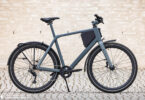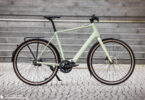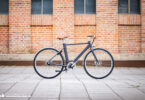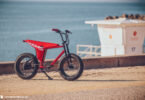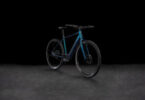With the Turbo Vado SL 5.0 EQ, Specialized have sent a promising urban ebike into the race and rely on their own SL 1.1 motor. Is 35 Nm torque enough for a commuter bike or does the bike squander the chance for a test win? Find out here!
Get an overview of the grouptest here: The best ebike of 2021 – The 19 most exciting concepts for everyday use
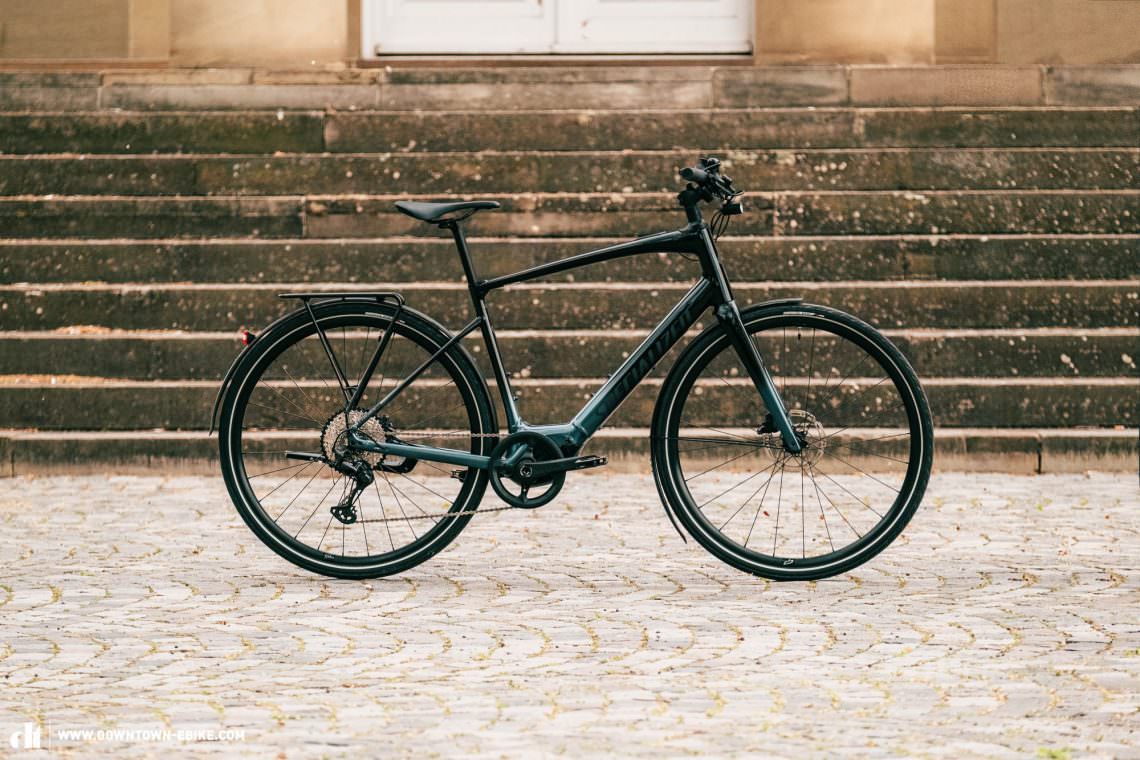
16.56 kg in size L | € 4,599 | Manufacturer’s website
Urban mobility and city traffic of the future are complex topics that encompass diverse concepts, theories and approaches. One thing’s for sure: urban mobility solutions are changing and the relationship between cars, public transport, bicycles and pedestrians will be turned on its head over the next decade. While some people still feel secure in their tin can, labouring their way through packed roads at the stop and go pace of a turtle while burning fuel and filling the air and our lungs with polluting particles, others have opened their eyes and discovered an alternative. Electro-mobility on two wheels, packed in a pretty and lightweight package, tied in a bow and given the name Turbo Vado. Sit on board, turn the motor on and you’re ready to ride! During your morning ride through the park, the air doesn’t just rise, so does your quality of life. After the rain of the last few weeks, the lush green of fresh trees, bushes and grass shines, your nose is tickled by the scent of newly risen flowers and your morning soundtrack is delivered by the chirping of birds – here in Stuttgart it even includes wild parrots.
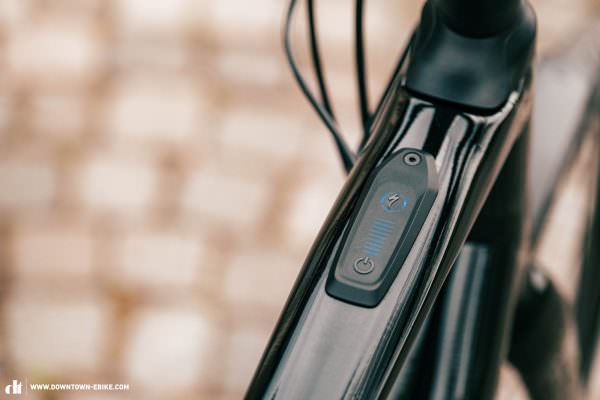
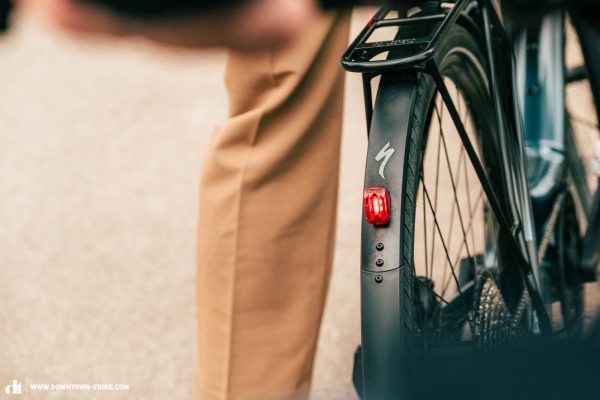
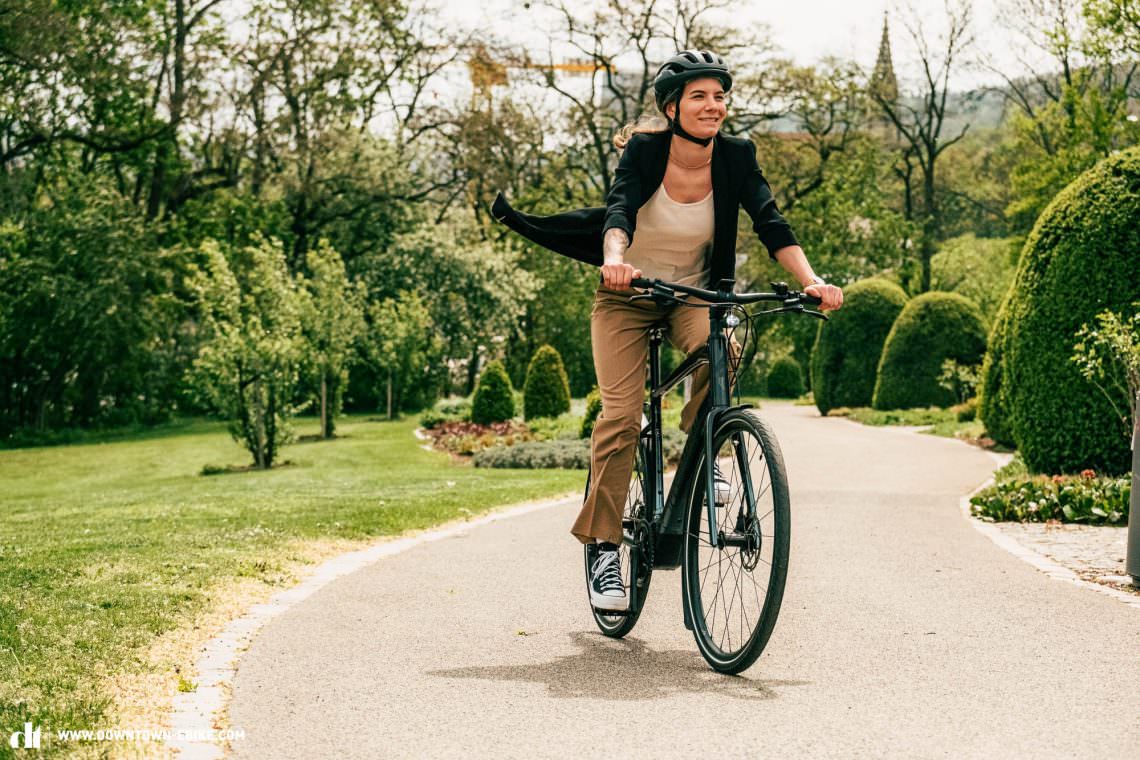
Specialized Turbo Vado SL 5.0 EQ spec in detail
The first look at this purported dream bike unexpectedly raises the question of what it’s doing in a group test of the best ebikes for commuting. Only when you look closer does the Specialized Turbo Vado SL 5.0 EQ identify itself as E-powered. A mid-motor could hardly be better or more neatly integrated into a frame, which demonstrates high-quality finishing with clean transitions and delicate lines. On the one hand, the cockpit convinces with its great ergonomics, on the other, it also feel chaotic with lots of cables running freely and entering the frame at various points. The elongated metal mudguards ensure clean suit trousers and intact shoes, not letting a drop of water past. The Shimano 12-speed drivetrain is well-chosen for the sporty character of the bike. However, the combination of a 44 t chainring and the largest 45 t cog is a little too hefty for steep climbs.
Only when looking at the display will you realise that the speed says 30 and the motor is no longer providing support – more natural handling at and above the 25 km/h assistance limit is hardly possible.
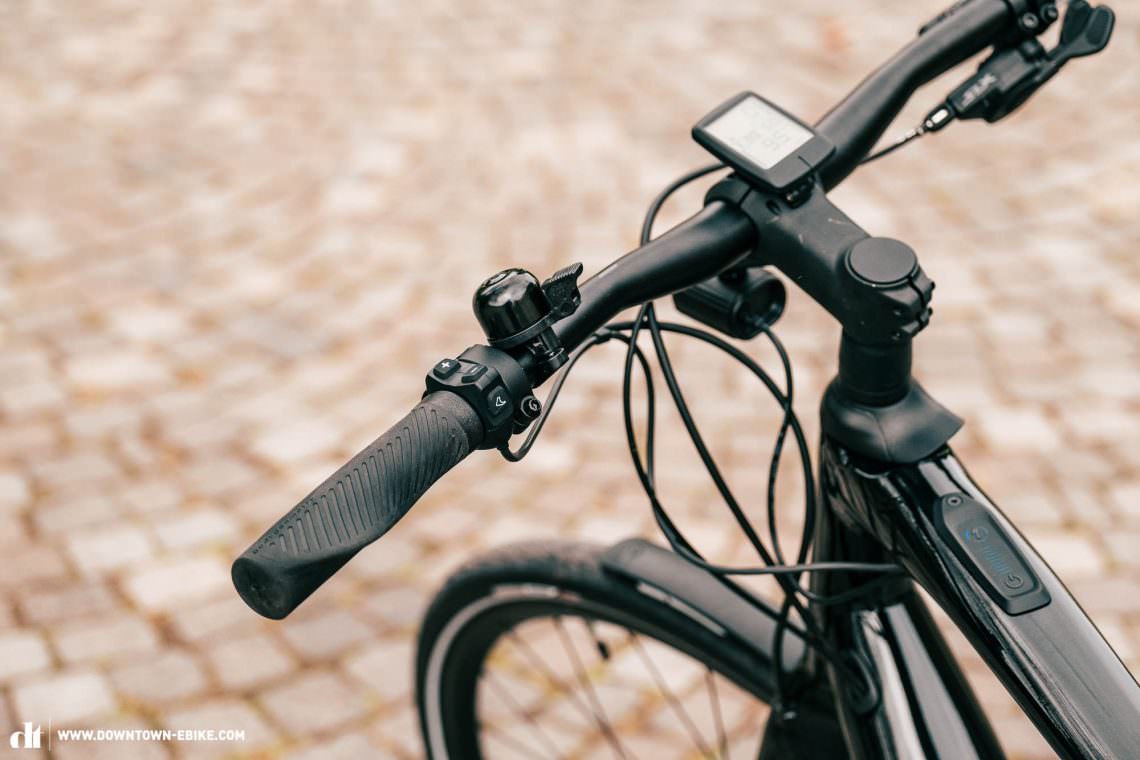
The TCU unit on the top tube lets you switch the motor on and off, select the assistance mode and display the remaining battery charge. The bar remote allows you to switch between modes as well as activate the excellent push assist. The display serves solely to show data.
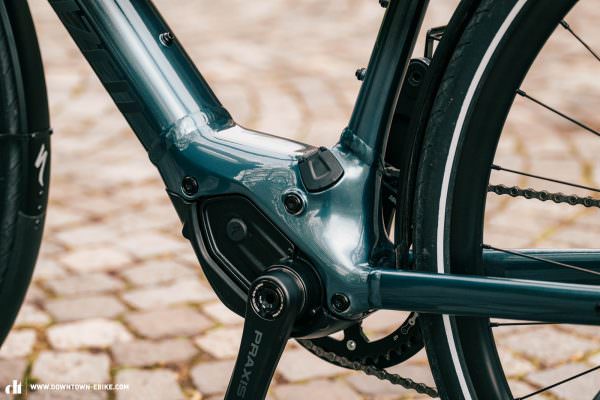
The Specialized SL 1.1 motor is perfectly and sleekly integrated into the pretty Turbo Vado SL frame.
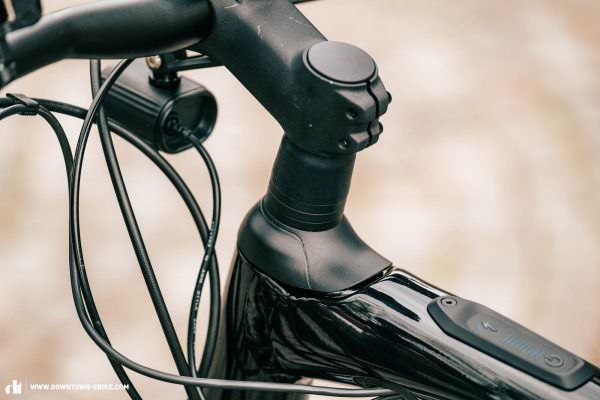
The Future Shock 1.5 suspension effectively swallows up all vibrations and is worth its weight in gold on bad roads and cobbles.
Specialized Turbo Vado SL 5.0 EQ
€ 7,430
Specifications
Motor Specialized SL 1.1 35 Nm
Battery Specialized SL1 320 Wh
Display Turbo Connect-Display
Fork Specialized Carbon 20 mm
Seatpost Specialized Alloy 30.9 mm
Brakes TEKTRO HD-R510 160/160 mm
Drivetrain Shimano SLX/XT 1x12
Stem Specialized Stealth Alu
Handlebar Stout Mini Rise
Wheelset DT Swiss R500
Tires Nimbus 2 Sport Reflect 700 x 38C
Technical Data
Size S M L XL
Weight 16.02 kg
Specific Features
Future Shock 1.5 suspension system
Leyzne lighting system
Mission Control app
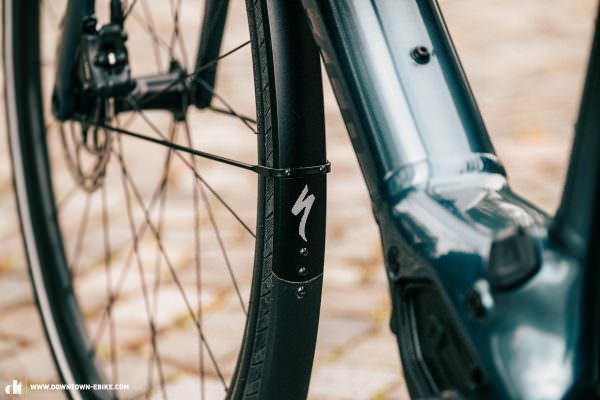
The extended mudguards don’t just look good but keep all dirt away from your shoes and trousers when it’s wet.

The 28 x 1.5″ Nimbus 2 Sport Reflect offer limited braking traction.

The combination of the 44 t chainring and 45 t cassette with the comparatively weak SL 1.1 motor limit enjoyment on steep climbs.
| Size | S | M | L | XL |
|---|---|---|---|---|
| Seat tube | 415 mm | 447 mm | 495 mm | 535 mm |
| Top tube | 554 mm | 587 mm | 610 mm | 630 mm |
| Head tube | 185 mm | 217 mm | 250 mm | 285 mm |
| Head angle | 70.0° | 70.5° | 71.0° | 71.5° |
| Seat angle | 73.5° | 73.5° | 73.5° | 73.5° |
| Chainstays | 445 mm | 445 mm | 445 mm | 445 mm |
| BB Drop | 70 mm | 70 mm | 70 mm | 70 mm |
| Wheelbase | 1,062 mm | 1,091 mm | 1,110 mm | 1,126 mm |
| Reach | 378 mm | 401 mm | 415 mm | 424 mm |
| Stack | 595 mm | 626 mm | 660 mm | 696 mm |
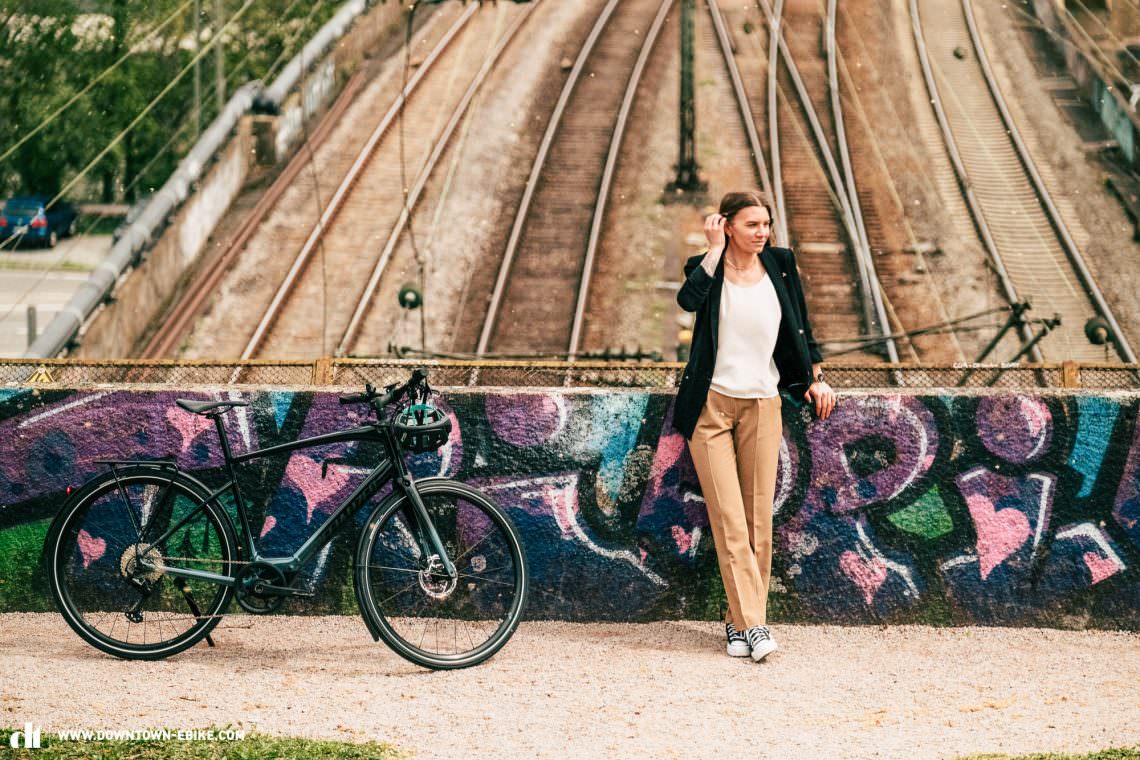
Specialized SL 1.1 mid-motor in detail – Is 35 Nm appropriate?
For the motor, the US company trusts just one brand – itself. The in-house Specialized SL 1.1 motor makes do with a comparatively low torque of 35 Nm and is paired with a fixed, 320 Wh Specialized SL1 battery in the diminutive down tube. If that’s not enough for you, you can order the SL Range Extender for € 379.90, which is mounted in the bottle cage, plugged into the charge port and provides you with an additional 160 Wh capacity. Control of the SL 1.1 motor is provided by the easy-to-use Specialized TCU unit on the top tube and the minimalistic bar remote. The removable and conveniently-placed Turbo Connect display on the bars serves only as a readout and can be connected with a heart rate monitor for training. A fourth interface with the SL 1.1 motor is provided by the excellent Specialized Mission Control app. It allows you to configure the three assistance modes individually, check the remaining battery charge and adjust assistance accordingly, as well as view a summary of your rides and performance.
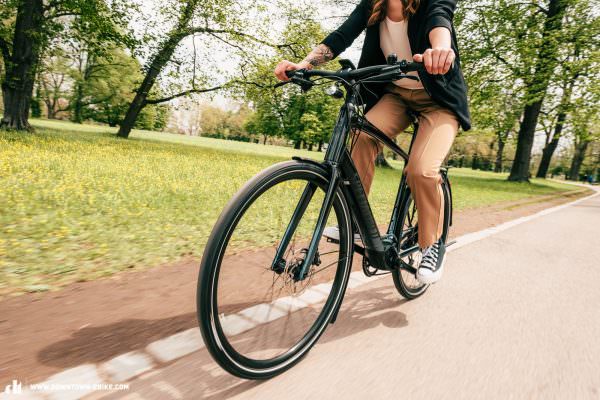

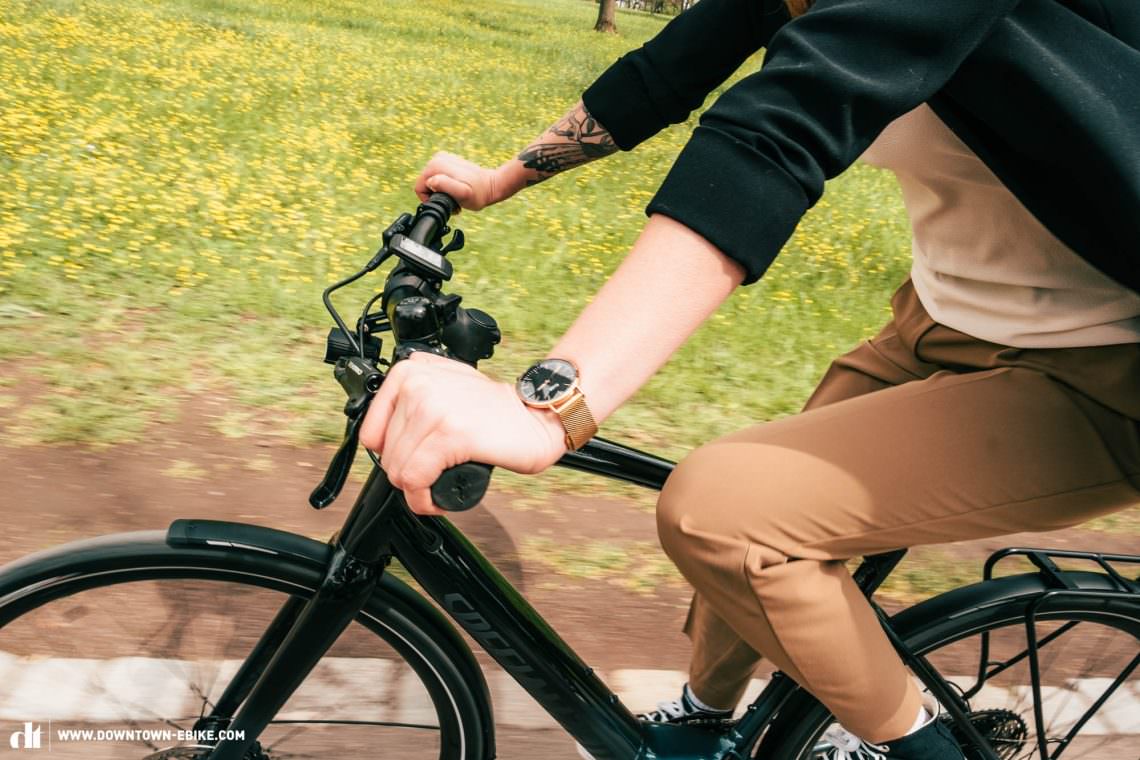
In our test, the motor convinced us with its pleasant and well-modulated handling. However, the limited torque requires you to engage your muscles even in the high assistance modes. The shuttle feeling you get from the R&M Roadster, which is propelled by the Bosch Performance Line CX with 50 Nm more torque, isn’t to be found on the Turbo Vado SL, which will take pride of place in your cellar for € 4,599. But that can also be a benefit: as you’re riding with more of your own strength anyway, the transition at the 25 km/h assistance limit and the end of the motor support is hardly noticeable. In this regard, neither the FAZUA motor of the Canyon Commuter:ON 7 nor the MAHLE Ebikemotion motor of the Schindelhauer Arthur VI/IX can keep up.

Specialized Turbo Vado SL 5.0 EQ on test
At 16.5 kg, the Specialized Turbo Vado SL 5.0 EQ is one of the lighter bikes in our commuter bike group test despite the rack, Lezyne light and metal mudguards, making it well-suited to taking on public transport or carrying up and down into your flat or the basement. The Future Shock 1.5 suspension up front is a comfort booster and effectively takes the sting out of small bumps like cobbles and uneven surfaces while at the rear, the seat post generates sufficient comfort. Overall, the Specialized Turbo Vado SL 5.0 EQ is a level or even two above the Canyon Commuter:ON 7. However, off the beaten track, caution is advised. The 28 x 1.5″ Nimbus 2 Sport Reflect tires offer limited braking traction off-road.
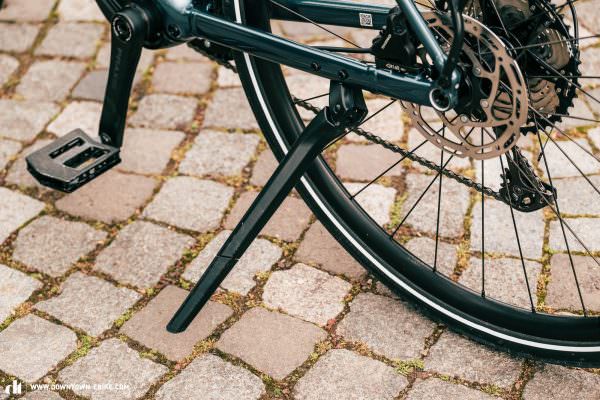
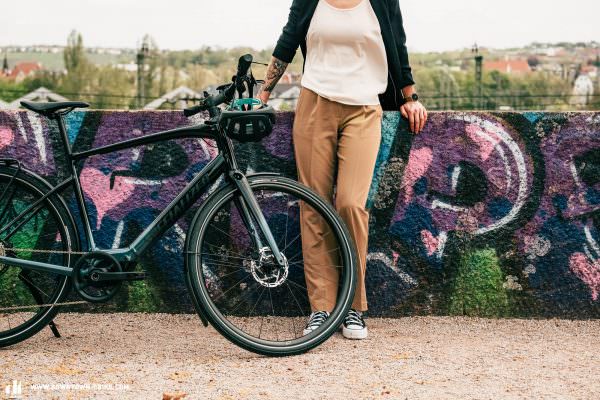
Tuning tips: for better climbing capabilities: a large cassette with 50 or even 51 teeth | for more compliance at the rear: a Cane Creek suspension seat post | for more off-road performance: fit Specialized Pathfinder tires to expand the range of applications on loose surfaces
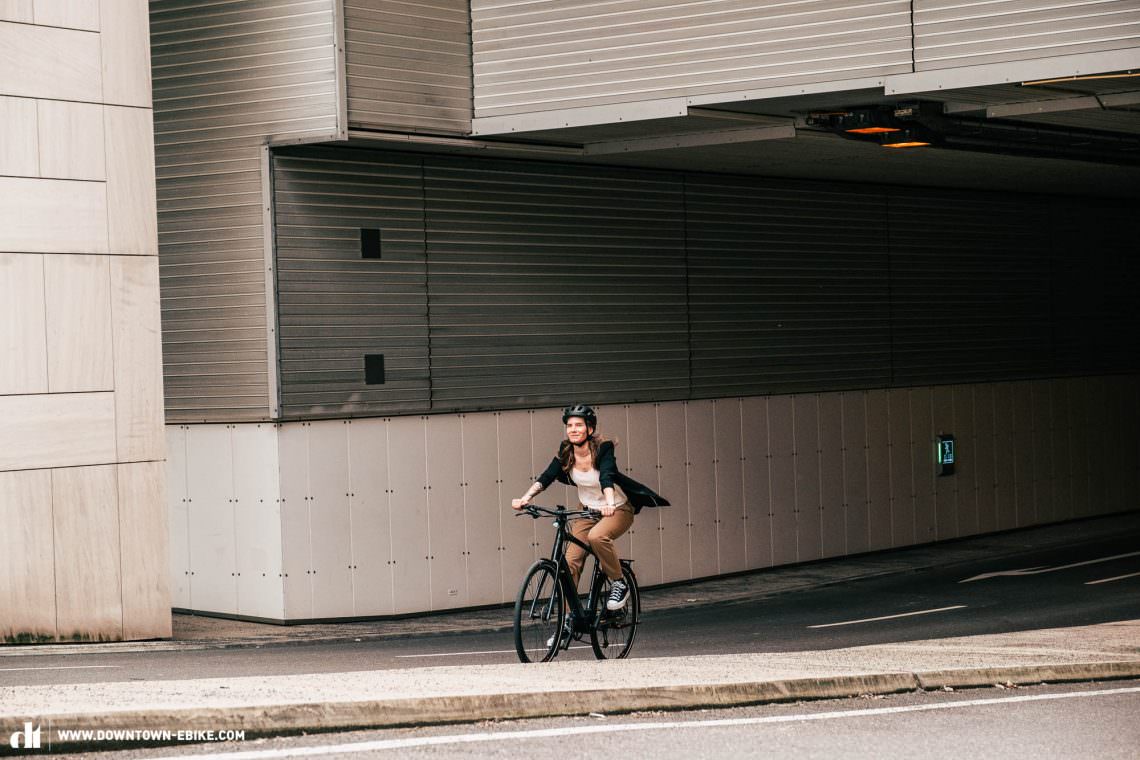
Whether as a fitness bike in your leisure time or for commuting to the office: the Turbo Vado SL is ready.
If you put a lot of stock in as quiet a bike as possible, you’ll be disappointed by the Turbo Vado SL. Despite the comparatively limited support, the SL 1.1 motor is one of the loudest in the test. On the other hand, the urban ebike convinces with its agile handling, a touring-suited riding position and shows its two sides during testing: the first as fitness bike 2.0 and your sporty training partner, the other as it carries you to work through the park with your laptop bag on the rack. So can dreams come true and does the Turbo Vado SL snag the win as a universal everyday and leisure weapon? Almost! Due to the comparatively limited E-support, it’s only got enough to take a very solid second place.
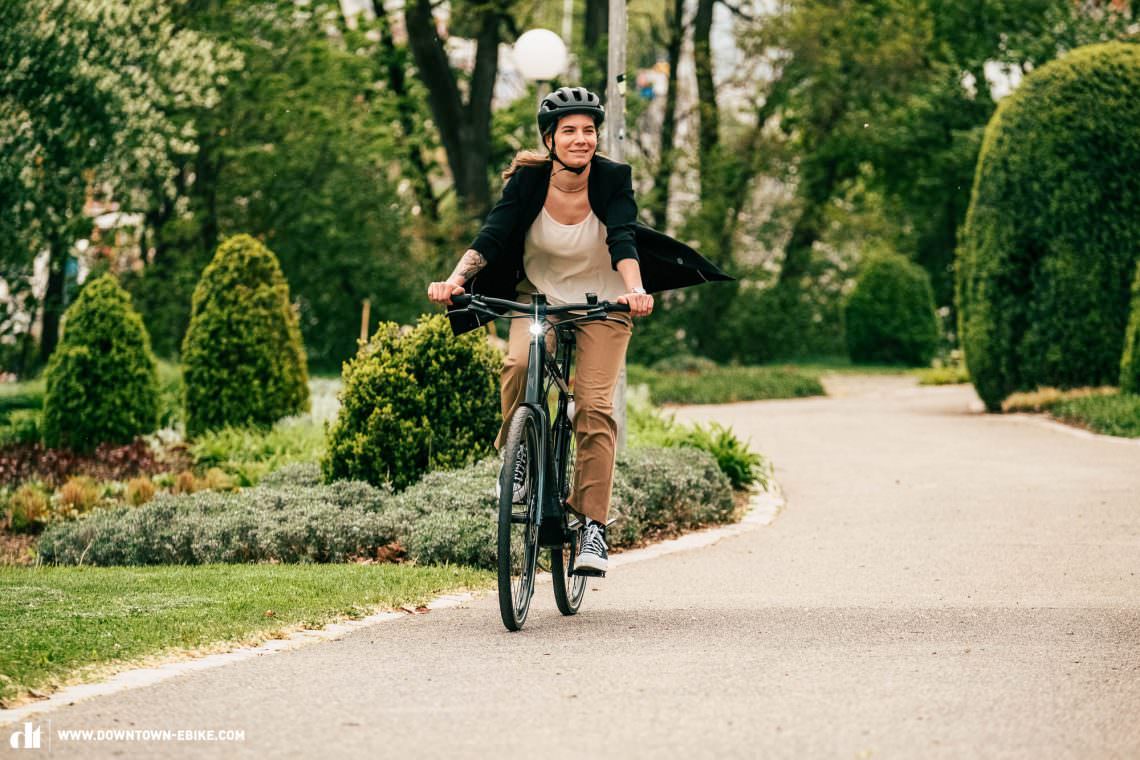
Specialized Turbo Vado SL 5.0 EQ conclusion
The Specialized Turbo Vado SL 5.0 EQ checks a lot of boxes if you want to ride sportily and on the flats. Both the modular battery concept, good vibration damping and successful motor integration all know how to impress. However, for hilly terrain and a completely sweat-free ride, the motor support of the SL 1.1 motor is too little, meaning it has to narrowly concede defeat in this group test.
Tops
- perfect motor integration
- modular battery concept
- good vibration damping
- full coverage mudguards let you arrive at the office clean
- comprehensive spec
Flops
- chaotic cockpit cable routing
- comparatively low motor support limits range of applications
Rider Type
6You can find out more about at specialized.com

The testfield
Get an overview of the grouptest here: The best ebike of 2021 – The 19 most exciting concepts for everyday use
All Bikes in this group test: Ampler Stout (Click for review) | Brompton M6L Cloud Blue (Click for review) | Cannondale Topstone Neo Carbon Lefty LE (Click for review) | Canyon Commuter:ON 7 (Click for review) | Diamant Juna Deluxe+ (Click for review) | FEDDZ E-Moped (Click for review) | FLYER Upstreet6 7.10 HS (Click for review) | Haibike Trekking 9 (Click for review) | Kalkhoff Endeavour 5.B Excite+ (Click for review) | MERIDA eBIG.TOUR 700 EQ (Click for review) | MERIDA eONE SIXTY 10K (Click for review) | Moustache Samedi 27 Xroad FS 7 (Click for review) | Movea Modo 20” (Click for review) | Riese & Müller Homage GT Rohloff HS mit DualBattery (Click for review) | Riese & Müller Packster 70 Vario (Click for review) | Riese & Müller Roadster Touring (Click for review) | Schindelhauer Arthur VI/IX (Click for review) | Specialized Turbo Vado SL 5.0 EQ | VanMoof X3 (Click for review)
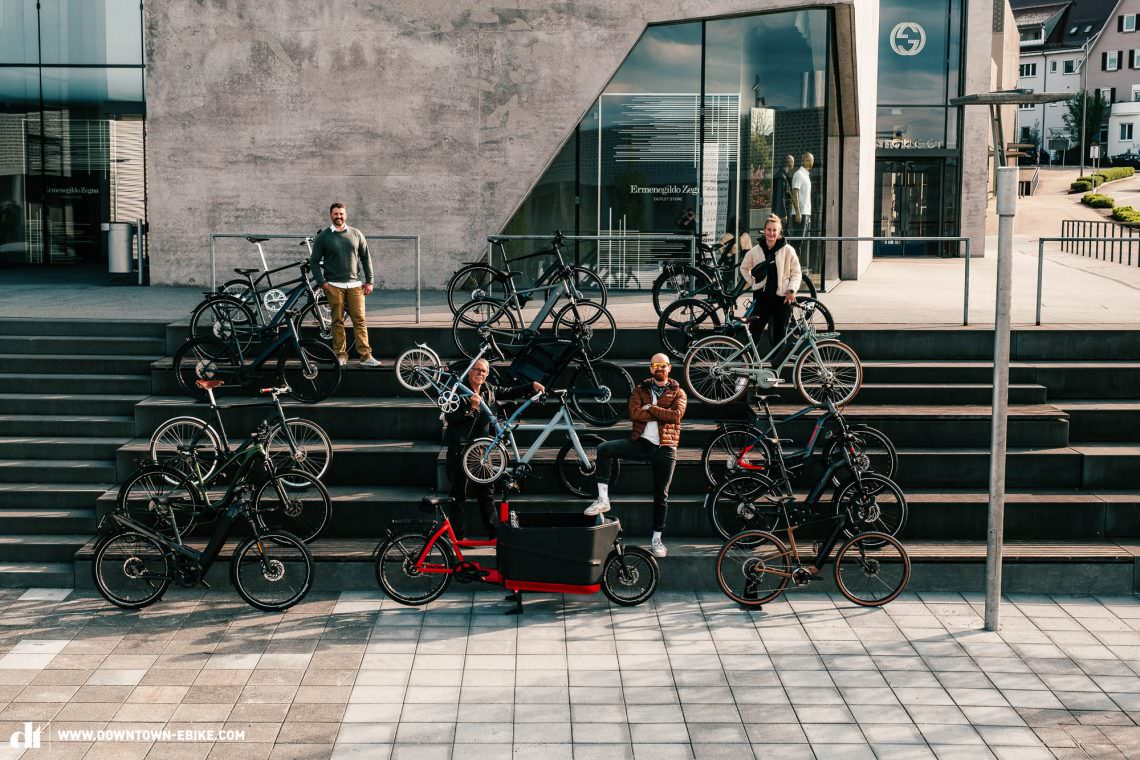
… or the regular long-distance commuters. Your usual commuting distance is more than 15 km each way and you use your bike every day. Your ebike is used as a means of transport and is a real alternative to a second car or public transport. Practicality, reliability and utility win out over the ultimate bling factor because it’s primarily a functional machine↩
This type of ebike unites experts and early adopters from both the fashion and tech scenes. As hip trendsetters, they know exactly how to ride with style. Sci-fi, hi-fi, Wi-Fi – they know exactly what they’re talking about and can easily play the keyboard while half asleep. With a tendency to live out their passions eccentrically, emotional decisions come before rational ones.↩
Take the kids to kindergarten, head to the weekly market and later get a crate of beer – no problem for this type of ebike, even without a car. These riders love to combine things: rational and emotional motives go hand in hand because investments are made on the basis of knowing what they want and getting a suitable vehicle that suits their vision and mission.↩
You live in a 15-minute city like Paris. This means that all your daily needs are within a 15-minute radius by foot or ebike. For short distances of less than 2 km, you aren’t afraid to simply walk. For medium distances of up to 10 km, you get on your bike. Longer distances are easily covered with a mix of public transport and your bike. Short-distance bikers are active/sporty people who never want to commit to one thing, maintain a flexible lifestyle and like to be inspired by impulses. Due to limited space in the city, they often don’t have a car and if they do, it is mainly used for pleasure.↩
You have significant biking experience and enjoy riding sportily. This group encompasses mountain bikers and trail shredders, road bike fans and Strava heroes, as well as touring fans who enjoy (rural) excursions into the countryside outside the city. You change into sports gear for your daily commute before showering when you get there because you enjoy working on your fitness. Your bike is used for commuting during the week as well as for tours at the weekend and is a means of transport and sports equipment all in one.↩
Learn more about the different rider types in this article: Click here! ↩
Words: Photos: Valentin Rühl


